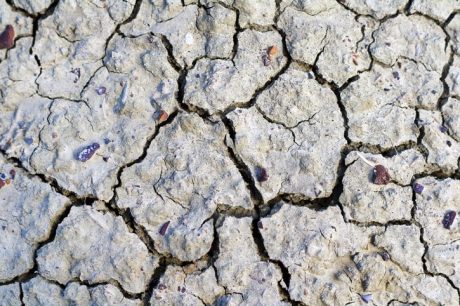Features
You are here
Alberta - crisis of fire and drought

February 26, 2024
There’s a new “season” in town, in Canada and elsewhere around our rapidly heating world: now it is spring, summer, fall, winter and fire.
Perhaps we should be a little less specific, and call it disaster season. Wildfires often trigger deadly landslides and floods that choke our rivers with debris, as the plants that an anchor the soil and filter the water are destroyed.
And perhaps we should be even less specific. “Season” implies a period of time with a definite end. Fire “season” is now virtually year-round.
In the past, fire “season” extended from March 1 to October 31. In the winter of 2022, Alberta arbitrarily shortened the “season” to 4 months beginning on June 1. That decision was not based on experience or science, but purely to make budget funding cuts.
Now, Alberta has officially declared an early start to fire season.” As of Feb. 20, 54 wildfires were burning in the province; about half of them were revivals of the still-smoldering remains of 2023’s record number of fires, that have burned all winter. Last fire “season” 22,000 square kilometres went up in flames.
After such a disastrous year, and faced with such an obvious and predictable return to crisis, is the Alberta UCP government of Daniel Smith any better prepared to fight fires in 2024?
Forestry and Parks Minister Todd Loewen says he will ask for extra funding in the next budget, enough to hire 100 new firefighters. The budget is due Feb. 29. Even if the funding is okayed, it is woefully inadequate – 100 new hires will only bring the number of Alberta firefighters up to 1,000.
In 2019, UCP premier Jason Kenny summarily killed the Wildland Firefighter Rappel Program, laying off 65 highly trained specialists. All this was to cut the budget. More budget cuts followed in 2020. Reports say that experienced firefighters are leaving the province to take jobs elsewhere. New, inexperienced hires only fill that gap on paper.
Firefighting used to be a full time, year-round job; down time was spent training, repairing equipment, and recovering from dangerous, high-stress work. Now most of the jobs are contract to contract, with firefighters not knowing if they’ll be rehired, or at what pay and conditions.
James Gault of the Alberta Union of Provincial Employees reminded the media the many of last year’s hires were students who won’t be available until April, will leave in September, and may or may not want to be rehired. He also stated that, as of Feb. 20, many experienced workers had not yet received new contract offers.
“We are still talking about Band-Aid solutions to a serious issue that we know is going to happen.”
In addition, Alberta is talking about introducing night time firefighting, to take advantage of cooler temperatures and lighter winds. Such a plan greatly increases dangers faced by firefighters, requires specialized equipment which isn’t yet available, and new training which hasn’t yet begun.
Perhaps if Premier Smith had spent less time this winter touring the country, crusading for anti-trans, homophobic bigotry, and more time reading the science and planning for a disaster everyone knows is coming, the province might be in better shape.
Climate change, El Nino and drought
Forest fires occur at the best of times, and are normally part of a process of renewal. There is nothing “normal” about the severity of 2023’s fire “season.” Nor is the disaster limited to Alberta. So why so much focus on that province?
Fires are in part a symptom of a severe drought that has afflicted Alberta, especially the southern region, for years. Last year saw farmers unable to produce adequate feed supplies for livestock, and arable farmland blow away. Cities like Calgary asked people to reduce lawn sprinkling.
Between August and January, a number of south Alberta communities had to have water supplies trucked in as reservoirs ran dry.
This year is predicted to be far worse, following a dry, warm winter with very little snow cover on the ground. Rivers and reservoirs are at historic lows.
The CBC reports: “The Oldman Reservoir west of Fort Macleod is at 28 per cent capacity, compared to a normal range between 62 and 80 per cent around now. St. Mary's Reservoir is at 15 per cent, when it should be between 41 and 70.”
Even in the north, where conditions are not as dire, there are warning signs. The agriculturally important Peace River has logged its lowest flow in a century of record keeping. Low flows of northern rivers will seriously impact Indigenous communities that rely on them.
There is no doubt that the El Nino – periodic warming of Pacific currents that affect weather patterns across the country – is partially to blame for fall and winter precipitation shortages and for the worse conditions yet to come. But normally these warm, dry seasons are followed by El Ninas, equally cool, wet ones.
As climate change worsens and land and sea temperatures rise, El Nino years become more severe and El Ninas provide less relief. Hopes that worsening drought will end with the El Nino are unrealistic.
Science vs Ideology
The Alberta tar sands is one of the world’s biggest single producers of greenhouse gas emissions. The “oil patch” produces as much air pollutants per day as the rest of the country’s industry, transportation and agriculture combined. In 2022, the oil industry used 1043 million cubic metres of precious water. Much of it ends up in unusable, toxic holding ponds of liguid waste.
To say such destruction and waste is unsustainable is a massive understatement.
Every Canadian party is devoted to the oil industry, but none more loudly and proudly than Danielle Smith’s UCP. Dominated by libertarian “free market” extremists, they almost always double as climate change deniers. Faced with a choice between their ideology and the science exposing and dealing with the drought and climate crisis, they choose big business every time.
There are means at hand to reduce climate change – shut down the tar sands and invest heavily in renewable energy. Means to mitigate drought conditions are no secret – mandate water rationing, impost high costs on big industrial users, expose the true severity of the crisis to mobilize the pubic – but the UCP will be unlikely to support any of these. They will issue reassuring statements, appoint talk-shops, and avoid any tough decisions that curtail industry profits or bump up against their twisted notions of personal "freedom".
As long as the short term needs of capitalism outweigh the long term needs of people and the planet, places like Alberta will careen towards becoming hellscapes of fire and drought.
Section:










